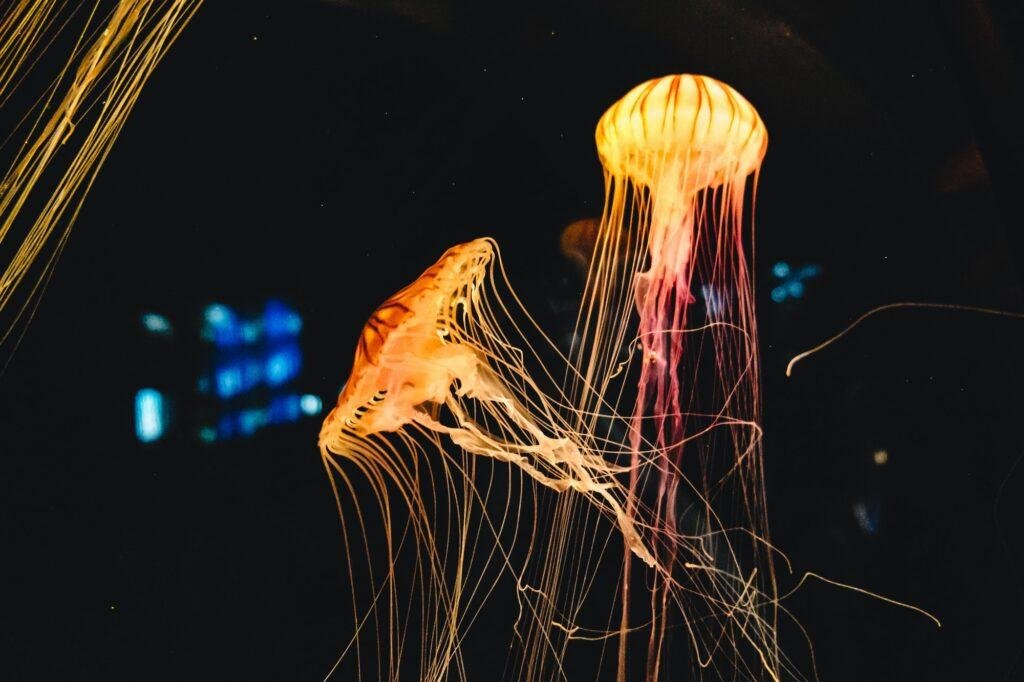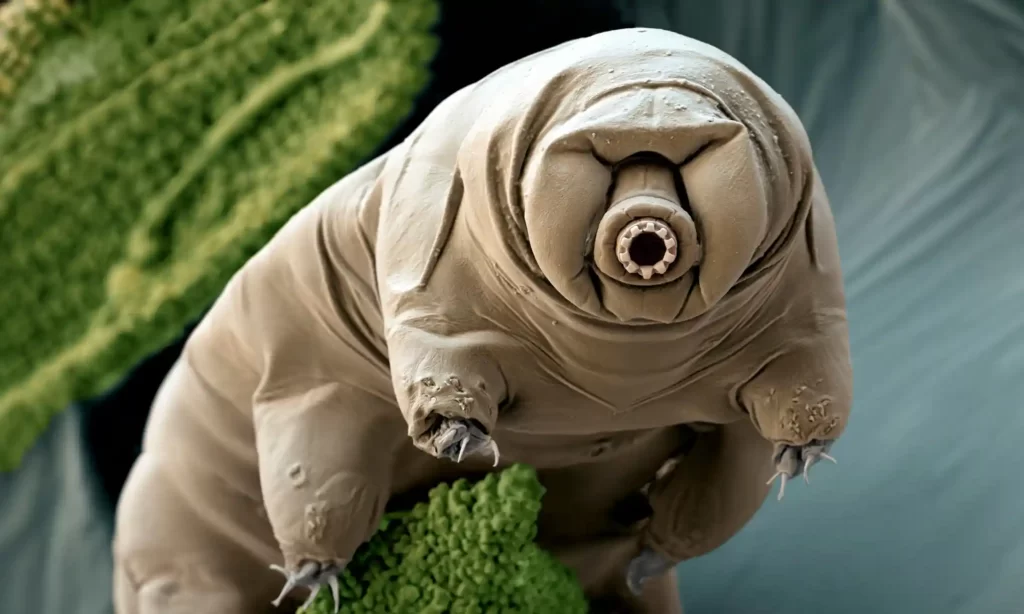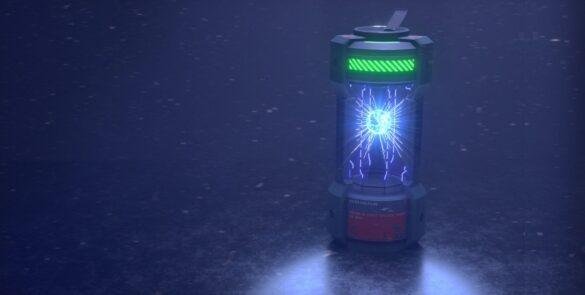HOME > BLOG > ENVIRONMENT >
4 Amazing Animals With Real And Most Incredible Superpowers
4 Amazing Animals With Real And Most Incredible Superpowers
- Team WOS
- 7 Mins Read
WOS is supported by its audience. When you purchase through links on our site, we may earn an affiliate commission “from advertisers”, while you don’t need to pay in addition.
Let’s look at some of the weird and extraordinary powers that certain creatures have. Watch this video for a better understanding.
The animal kingdom has evolved from unicellular organisms to gigantic dinosaurs and intelligent social animals, like us, Human beings! Throughout this evolutionary history, different species have left some characteristics or gained something new depending upon nature and food requirements. These changes in the body structure provide the biggest proof of evolution today.
We do not have tails but our close cousins monkeys and chimpanzees do have. Some along the line did not feel like having tails as they were not really important while living on the ground, thus due to natural selection, the tail got shrunk gradually and we all are now left with a tail bone in the lower part of our back. Thus depending on the requirement, some animals also gained a certain new feature to save themselves from the predators.
Our defense mechanism is also a result of evolution. For example, many animals have developed their eyes to work separately, one to look for food and one for predators. Some of these powers that animals have gained over thousands of years, seem like superpowers to us. Birds have better vision than us and snakes can sense the thermal radiation of other bodies. But today in this video we will talk about some weird and extraordinary powers that certain creatures have.
1. Immortal Jellyfish
“Turritopsis Dohrnii” is a species of Jellyfish discovered first in the Mediterranean Sea in the 1880s. What are their superpowers? Well, they are immortal!

The life cycle of jellyfish reverses and repeats, and thus it may never die of old age.
Unlike other species of jellyfish which have a fixed lifespan of a few months, they are among very few known species that can revert themselves to the immature stage and thus keep living their life in an unending cycle. Just imagine, whenever you grow old, you can revert to young age and then live again. This cycle continues for a very long time and technically they will live like this for eternity.
The body part of the jellyfish, also known as medusae, can transform back into a polyp stage whenever there is a case of sudden temperature change or any damage to the body part. Whenever the medusa gets damaged, they reabsorb the tentacles. This results in the loss of swimming ability of jellyfish. They then settle down on the seafloor like a blob and over the next two days, the blob develops into a new polyp. Polyps are tissue growths in a certain part of the body. These polyps later get matured and a new medusa grows off from them.
This process is called Transdifferentiation, which allows the transformation of specialized cells i.e somatic cells of medusa to convert into the specialized cells of a polyp. The life cycle of jellyfish reverses and repeats like this, and thus it may never die of old age.
How this process happens and can this process of transdifferentiation help find the age-reversal technique for human beings, is still a subject of study. Many biologists are trying to add this phenomenon in the stem-cell study to find a cure for aging in the human body but the study is very difficult as it requires a lot of observation.
Also, this unique feature of the immortality of jellyfish has not been observed in their natural habitat. So do they ever die? The answer is yes! They can die due to diseases or getting eaten by predators but if left alone, they do live for hundreds of years and also maybe for eternity.
2. Tardigrades
If our first candidate was immortal, our next superhero is the toughest animal on the planet. It is completely an alien roaming around us. The name is Tardigrade and some may call it a “water bear” as the shape resembles. Well, it is not as big as a bear! It is a microscopic animal, measuring only half a millimeter in length, and usually spend its life in mosses and lichens.

Most tardigrades suck fluids from cells in plants, algae and fungus, puncturing cell walls with needlelike stylets in their mouths and hoovering up the liquid inside.
Talking about its superpower, it can survive more than a decade without water and can also survive a temperature range of -196 degrees celsius to 100 degrees celsius. It can also withstand a huge pressure of 6000 atmospheres. The European space agency and Russian agency had sent a probe named FOTON-M3 into space in 2007 with Tardigrades aboard. They survived the conditions of space and even retained their reproductive capacity. The National Institute of Polar Research of Japan has shown that they have found tardigrades frozen in the south pole for more than 30 years.
This capability of Tardigrade is again a subject of study and scientists are trying to apply the principle to humans for long-term suspension. Particularly in Tardigrades, they enter a process called Cryptobiosis, which is a prolonged state of suspended animation. This process reduces the metabolism rate of the body and thus the body remains suspended until the condition around the body returns to normal.
Scientists have also found a particular gene in the Tardigrade that produces a protective protein that binds together and provides a blanket around the DNA to avoid any damage to it. This particular protein is called a damage suppressor. They can also withstand harmful UV radiation due to the presence of various fluorescent pigments that act as a reflective shield. These pigments convert the UV light into blue light. This is how a Tardigrade survives in the coldest and most radiative regions.
3. Spiders
There is a reason we have a superhero named Spiderman. These small creepy creatures have a lot of specific abilities that make them extraordinary. The most obvious feature of a spider is its web. The spider web is itself a great piece of architecture. The kind of symmetry and arrangements in the layers of the web has amazed the minds of scientists. The marvel of web architecture tells us the underlying symmetrical nature of reality itself. But here we will focus on the physical features of the spider webs.

Some young spiders and smaller spiders will use their silk to help them travel around by floating in the air – this is called ballooning. They shoot off some silk that catches in the wind, helping them drift to a new home.
There is a species of spider known as Darwin’s bark spider or Caerostris darwini that can weave a web up to 80 feet long. Many kinds of research are going on about the strength of these huge webs, and the team has found that the web strands were as tough as the silk and they were 10 times stronger than Kevlar, which is heat-resistant and strong synthetic fiber. They produce the toughest known bio-material on the planet. The purpose of web building is not only hunting but some spiders do it to layout nests.
The structures of webs vary from spider to spider. Some are flat, some are fuzzy while Orb-weaver spiders build the most beautiful spiral webs. They are also very good dancers. For example, in Australia, we have peacock spiders that perform synchronized movements in different parts of the body to attract the opposite sex. One more feather to their cap is their jump. Jumping spiders can jump up to 50 times their body length. If we compare all these features with human standards, they do seem out of this world.
4. Mimic Octopus
So until now, we had an immortal, a superman, and a master architect. Now we are going to the best shape-shifter that we know of. We have known many animals to change their body colors to save themselves from predators or to attract partners but here we have a master mimic that can change its shape to look like a completely different creature. The name is Mimic Octopus.

Changing in the blink of an eye, the mimic octopus can re-create itself into 15 (and possibly many more) venomous creatures that live in their surroundings.
They live in the Indo-Pacific region and like every other Octopus, they too use chromatophores to disguise themselves in the presence of any predator. They are smaller in size and usually grow up to a length of 50-60 cm. Generally brown in color, they also form white stripes on their body to scare off small animals. Their best feature is to mimic other organisms. They can mimic lionfish, Zebrias, jellyfish, and sea snakes.
For example, sometimes they tuck down into a hole and stick out two arms, hiding the other 6 and moving them in opposite directions. This will seem like a sea snake is moving around a mudhole and the predator will leave it alone. Sometimes they hold out their arms radially and take on black & white bands to mimic the poisonous spines of lionfish. To mimic the Zebras or Zebra sole, they take all 8 arms held behind and use them to swim forward. Among all the mimicries, its most preferred disguise is of flatfish.
The mimicry is not random and they specially take the shape of a certain animal when they feel a particular fear. They also mimic aggressive crabs to hunt their prey down. This octopus has also been observed to mimic seahorses and eels. Such an advanced level defense mechanism points toward a higher intelligence but the question is how can an organism with the small brain as the octopus can have such an advanced process of intellectual thinking. Scientists are searching for the cause and as we talk, somewhere a fish would have been deceived by this octopus of being something else.
There are flying snakes, weight-lifter ants, body-parts-growing salamanders, and whatnot. Nature is filled with such marvels. From plant kingdom to animal kingdom, we have “meeks” and “mighty”, we have “fools” and “sages”, we have “slow” and “swifts”. The planet itself is filled with a universe of amazing things. It is only up to us to look out and embrace the diversity and feel the surprise in every corner of mother nature.
What are your thoughts about these creatures with seemingly extraordinary powers? Let us know in the comments.
Share this article
Team WOS
Share this article
Lao TzuNature does not hurry, yet everything is accomplished.
Latest posts
We have learned many partial truths and some remain with us even when we are studying higher courses. Let’s look up such partial truths that are very common...
How do the animals and birds view the world around them? Do they perceive everything just like a human? Let's understand the basic anatomy of the eyes of...
What will the conditions be for the human body in space? How much difference a human being would feel while being in space? Space is scary and lonely, and conditions are...
Here is a list of the best science books that'll take you deep into the ocean of science. Books fueled the mighty revolutions in human history and produced...
World's most renowned scientists think that the cosmos has quantum consciousness. First of all, what exactly is consciousness? Scientists are actively engaged experimental tests of these ideas. One approach is to study brain-impaired patients to see if their information...
Trending Articles
We have explored only a few percent of Earth but what if we could somehow reach the center of the Earth? Today let’s go on a Journey To The Earth's Core. The underworld has been in the imagination for many centuries — be it a place of hell or the afterlife, or a place from which future heroes will...
The universe is filled with breathtaking views, shiny stars, glowing galaxies, pulsating magnetars, dark wandering planets, and whatnot. Let us take a trip to some magnificent and best travel spots in the solar system.
Here is a list of the best science books that'll take you deep into the ocean of science. Books fueled the mighty revolutions in human history and produced...
Can we produce Antimatter? Well, Anti-matter is often produced naturally in space. During the radioactive decay of heavier isotopes, positrons are produced in large amounts. Breaking down neutrons into protons and electrons also produces...
Is Pluto a planet or not? The debate over its classification rages on, with some scientists advocating for a return to its original status. The controversy over Pluto's planetary status raises larger questions about how we define and categorize objects in space
Climate has changed in the past on its own but modern pollution has been its severe accelerator. Let’s look at some of the huge disasters that happened in the past few years due to climate change.













